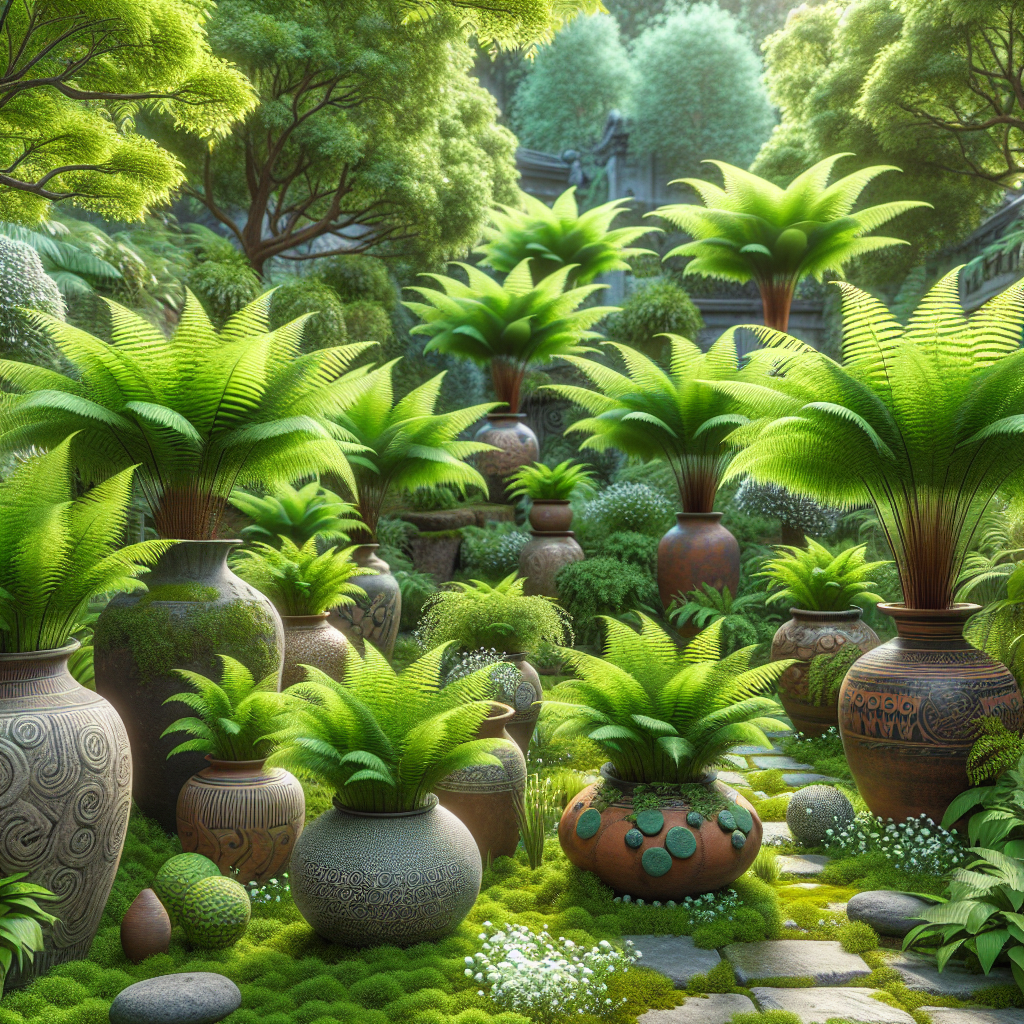Achieving Lush Greenery with Ferns in Pottery Gardens
When it comes to creating a lush and verdant garden, ferns are the ultimate go-to plant. With their graceful fronds and delicate foliage, these ancient plants can transform any space into a green oasis. One popular way to showcase ferns is by planting them in pottery gardens. This not only adds charm and elegance to your outdoor area but also allows for easy maintenance and versatility in design. In this article, we will explore the art of achieving lush greenery with ferns in pottery gardens.
Pottery gardens have been a favorite among garden enthusiasts for centuries. The use of pots and containers provides flexibility in terms of design, as they can be moved around or rearranged according to your preference. Ferns, with their varying sizes and shapes, are perfect for potting as they require little space and can thrive even in the smallest of containers.
Before creating your pottery garden, it is essential to choose the right type of ferns that will flourish well in pots. Some popular choices include Maidenhair ferns (Adiantum), Boston ferns (Nephrolepis exaltata), Bird’s Nest ferns (Asplenium nidus), and Japanese Painted ferns (Athyrium niponicum). Each of these varieties has its unique characteristics, making them suitable for different potting arrangements.
Once you have selected your preferred fern species, it is time to choose the appropriate pots or containers for your garden. Clay or terracotta pots are ideal as they provide good drainage while allowing the soil to breathe adequately. However, if you prefer a modern touch or want a more eclectic look, you can opt for ceramic or metal planters instead.
To ensure proper growth and development of your potted ferns, it is crucial to create a suitable growing environment. Ferns thrive best in partial shade or indirect sunlight, so placing your pots in areas that receive filtered light is ideal. Additionally, ferns prefer consistently moist soil, so you should water them regularly, keeping the soil slightly damp but not soggy.
When it comes to potting soil, ferns prefer a well-draining mix that is rich in organic matter. You can use commercially available potting mixes or create your own by combining equal parts of peat moss, perlite, and compost. This will provide the necessary nutrients and moisture retention essential for healthy fern growth.
Once you have prepared your pots and filled them with the appropriate soil mix, it is time to plant your ferns. Gently remove the fern from its nursery pot, taking care not to damage the delicate roots. Place the fern into the new pot, ensuring that the crown (where the fronds emerge) is level with or slightly above the rim of the container. Fill in any gaps with additional potting mix and lightly tamp down to secure the plant.
To create an aesthetically pleasing pottery garden, consider mixing different types of ferns in various sizes and shapes within each container. This will add depth and texture to your garden while creating an inviting atmosphere. You can also add other complementary plants such as mosses, ivy, or small flowering plants to enhance visual interest.
To maintain healthy fern growth in pottery gardens, regular care is essential. In addition to watering, it is crucial to monitor humidity levels as indoor environments can sometimes become too dry for ferns. Misting your plants regularly or placing a tray filled with water near them can help increase humidity levels.
Periodically fertilizing your potted ferns with a balanced fertilizer will provide them with the necessary nutrients for continuous growth and vibrancy. Be sure to follow package instructions regarding application rates and frequency.
Pruning plays a vital role in maintaining lush greenery in pottery gardens as it helps control plant size and shape while promoting fresh growth. Remove any brown or damaged fronds by cutting them close to the base of the plant. Additionally, you can trim any excessive growth to keep your ferns looking tidy and well-manicured.
In conclusion, creating a lush and green pottery garden with ferns is both rewarding and visually appealing. By selecting the right fern species, choosing suitable containers, providing adequate growing conditions, and maintaining regular care, you can achieve a stunning display of vibrant foliage. Whether you have a small patio or a large outdoor space, potted ferns can transform any area into a tranquil haven filled with natural beauty. So why not start building your own pottery garden today and enjoy the soothing ambiance that ferns provide?













